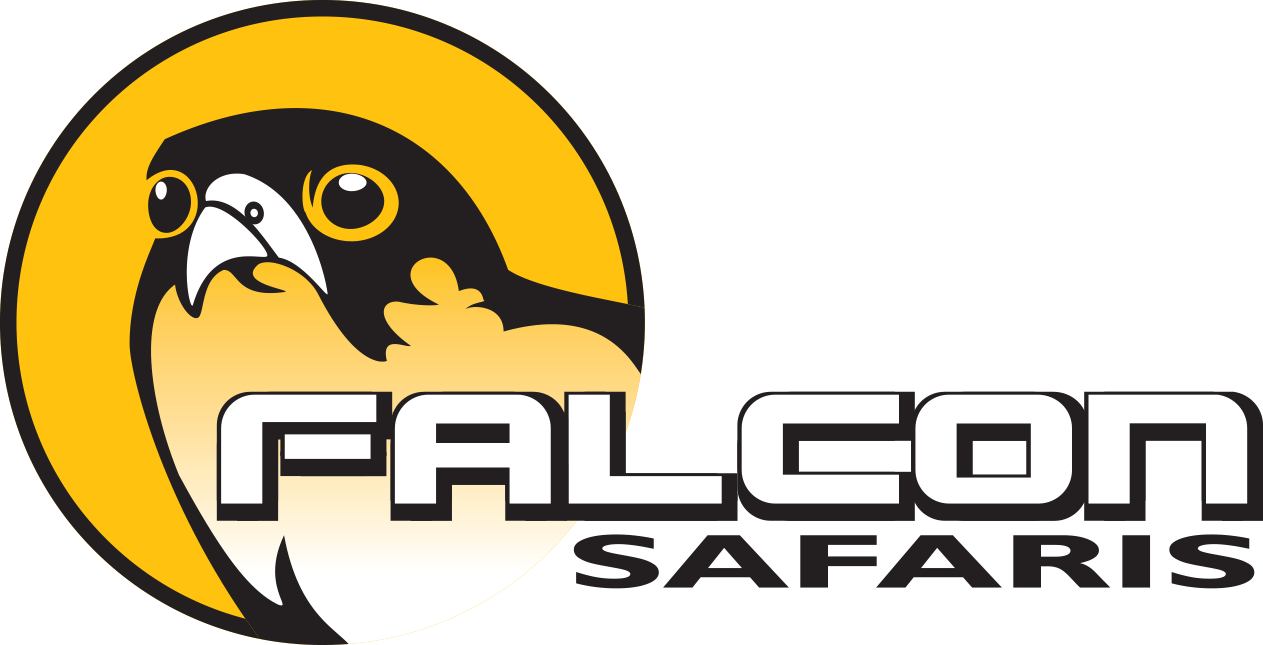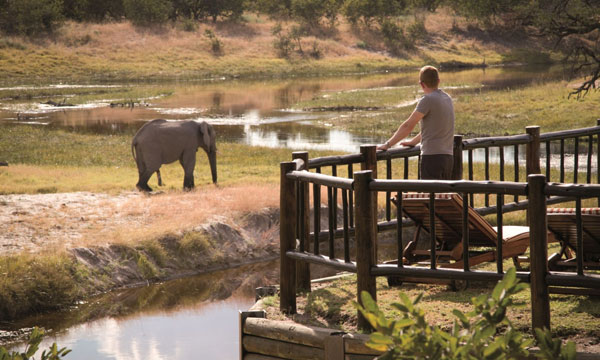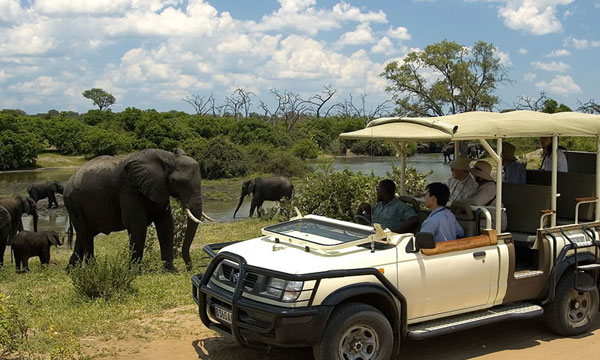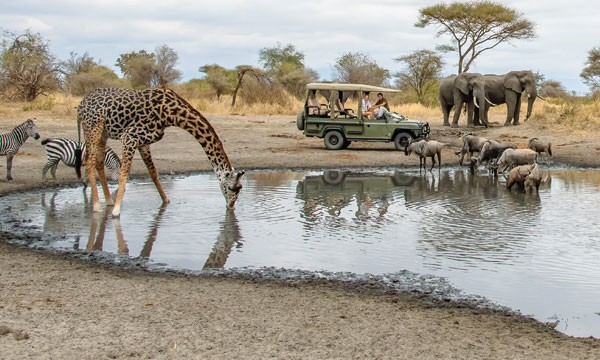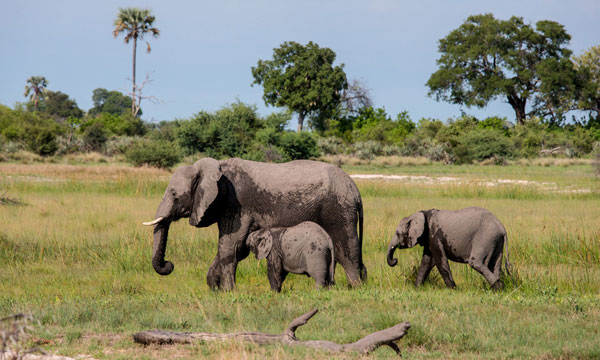Call Us
8:00am - 17:00PM
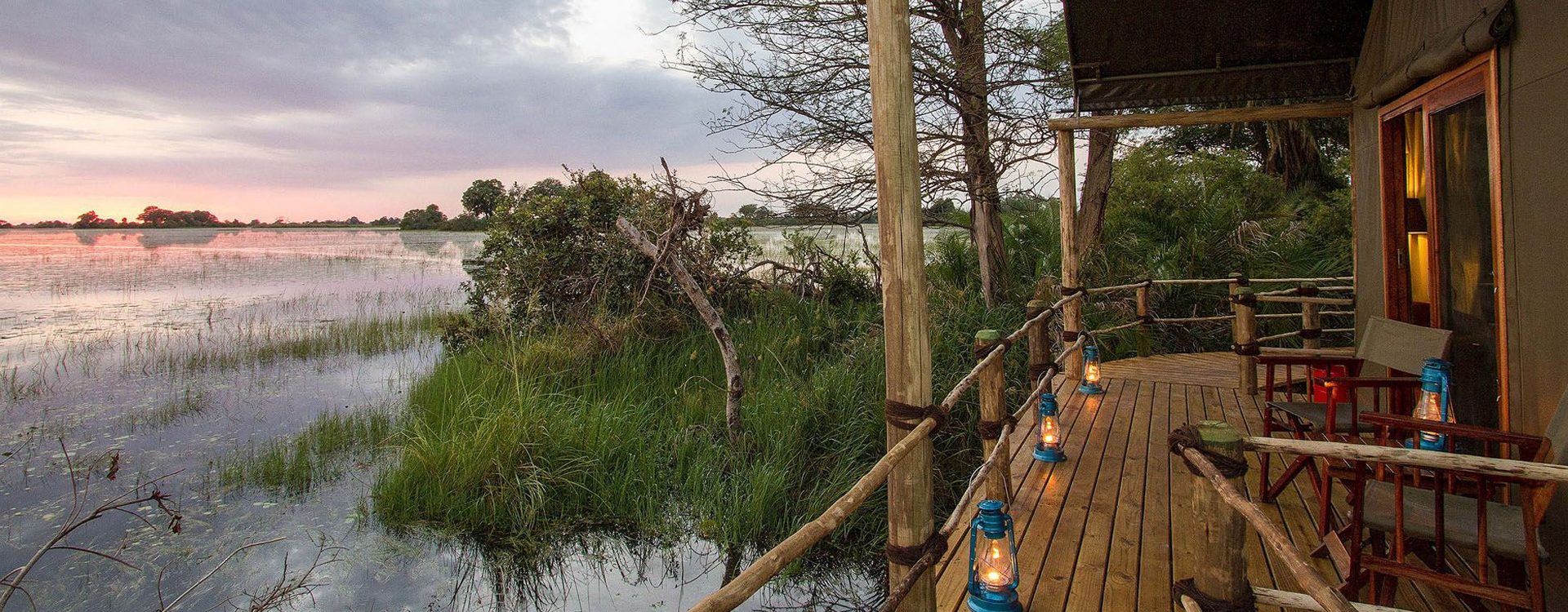
Savuti & Kwai River Valley
About Savuti & Kwai River Valley
Savuti (often spelled Savute), is part of Chobe National Park and it lies South of the Chobe River Front. The majestic Savute begins when you approach the Ghoha Hills after travelling down the river area and through the thick sands of the Chobe Forest Reserve. It is one of Botswana Wildlife hotspots, known for its exceptional predator views.
Savuti & Kwai River Valley Tours and Safaris
We Think You’ll Love
BEST TIME TO VISIT
The Best Time to Visit Savuti and Kwai River Valley is from May to October. During these months, the weather is cooler and dry, perfect for safaris with daytime temperatures pleasant at 25°C to 29°C. This period offers exceptional wildlife viewing near water sources. Following this, the onset of summer rains from late November brings a lush, green landscape alive with new impalas and zebras, turning the area into a bustling hub for predators. It's a wonderful time for nature lovers to explore the dynamic ecosystems of these valleys.
Wildlife
Savuti & Kwai River Valley are known for their amazing wildlife, including lions and hyenas. Close by, Linyanti offers stunning views and great chances to see animals like buffalo, zebra, and elephants up close. With fewer vehicles around, visitors get a peaceful, authentic experience of Africa's wilderness. This area is perfect for anyone wanting to see beautiful landscapes and lots of animals in their natural habitat.
What To Experience
we think you will love
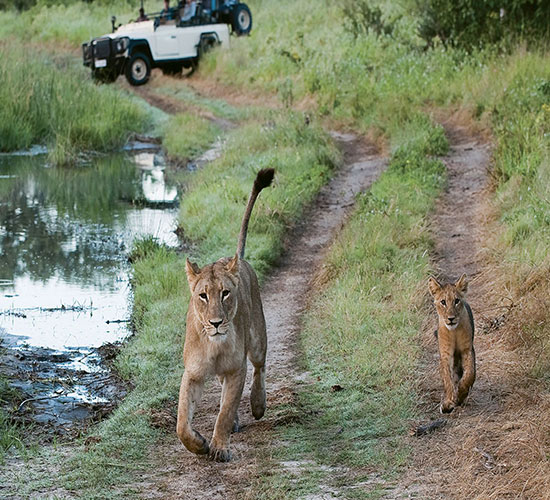
Game Drive
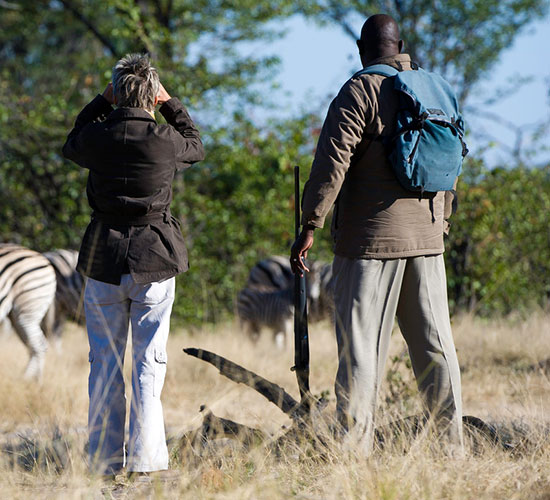
Bush Walks
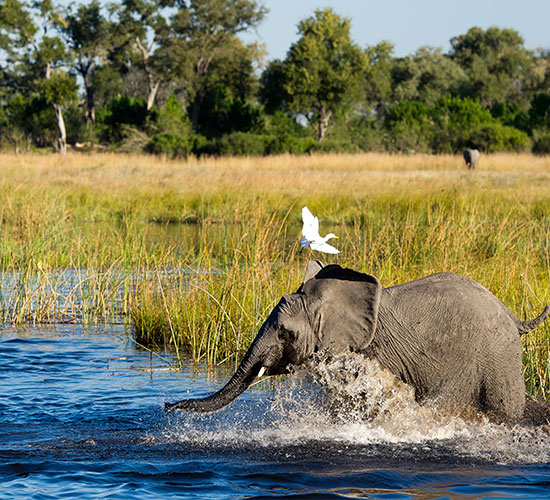
Birding
Travel Guide For Savuti & Kwai
We Think You’ll Love
When To Visit Savute And Kwai ?
The busiest month in Savuti is April, followed by June and July. Prices will be more expensive during this time. The dry season from May to October is considered the most comfortable time for a Savute safari. Temperatures are at their lowest (just above freezing on a midwinter early morning) and there is almost no rain.
Daytime temperatures range from 25°C to 29°C. It is important to note that the weather is hot and dry in September and October as the rains build, but the game viewing around water is exceptional. Summer rains turn Savuti into a verdant wonderland. Temperatures drop slightly due to cloud cover and the new lush greenery, and with hundreds of impalas giving birth as migrating zebras arrive, Savuti transforms into a predator haven. You might get a few raindrops, but it's early summer.
Famously large prides of lion and packs of hyena hunt on the open grasslands, leopards patrol the woodlands, and it’s one of the best places in Botswana to see wild dogs. From late November to early January is one of the best times to go to Savuti.
How Do You Get To Savute ?
There are 3 ways you can use to get to Savute, a light aircraft, a mobile safari or a self-drive. A light air transfer from Maun or Kasane (depending on guests' itinerary) to the Savuti airstrip in Chobe National Park is required to reach the camp. The flight from either town takes about 40 minutes, and the view from the plane over the beautiful Chobe becomes part of the experience.
Upon arrival at the Savuti airstrip, guests will be greeted by a Camp Savuti representative and driven the final 20-40 minute journey to the camp. This road transfer could be considered more of a game drive because it passes through Chobe National Park and there is a good chance of seeing a variety of animals before arriving.
Savute Wildlife
During the wet summer months, animals migrate to Savute to feed on the marsh's lush grasses.
With the arrival of the rains, thousands of zebras migrate from the northern regions of Chobe and Linyanti into the marsh's lush grasses. During the wet season, the game does not disperse. In fact, it congregates on the floodplain and marsh. Here are some of the most common animals you will see.
Elephants
These big mammals can be seen in the Savuti area and it is very common to see them in large numbers at a waterhole at any given time. During the winter months the elephants are rare in the Savute area due to lack of water, but in the wet summer months they move back into the area.
Lions
There is a group of Lions that hunts adolescent elephants in the area. You will come across a few whilst in Savute. It was also in Savute where a documentary of an iconic war between Lions and Hyenas was filmed.
Zebra
Many zebras move to the grasslands of the Savuti in summer when food is scarce elsewhere. The Zebra migration here is much smaller compared to the migration between the Okavango Delta and the Makgadikgadi Pans.
Impala
Impala are very common in the Savuti region. There are small herds that are resident in the area but most migrate into the region in summer. They flourish well in this area and in other regions where grazers might not find much food.
Tsessebe
These large antelope are often found along the river. They are common in the Okavango Delta, but you can still be seen around the Savuti area.
Buffalo
One of Africa's Big Five, the buffalo is also common in Savute. The buffalo is known to be very dangerous when wounded or caught off guard. They are considered to be the cattle of the bush. You will find large herds on the abundant floodplains of the Savute Marsh and are a major target of the lions.
Giraffe
You are likely to come across Giraffes in areas where there are many acacia trees. The giraffe feeds exclusively on these species of trees. Because of their long necks, they do not need to drink often and can live well in quite arid areas.
Wildebeest
These animals migrate to the lush grasslands of the Savuti, and the Savuti Channel or Linyanti River in search of water in the dry season. They rely on these sources of water to survive in the dry winter months.
Kudu
Kudu are one of the most beautiful and unique of the African antelope; they have a dusty brown coat, long twisted horns and white stripes along their sides. They come down to the Savuti Channel and the Linyanti to drink and in search of food.
Savuti & Kwai Birdlife
The elegant, long-legged kori bustard and the stately secretary bird live in Savute, which is home to some of the world's largest flying birds. These amazing birds prey on unsuspecting snakes and rodents slithering through the long grasslands. The migration of carmine bee-eaters atop the spacious backs of kori bustards will delight birdwatchers. The endangered ground hornbill, which meanders through the tall grass with tangerine eyeshadow and a bulging throat, is another local birding attraction. Raptors use their razor-sharp talons to dominate the sky and tree tops. The sight of a bateleur eagle swooping down with ivory wings to catch unsuspecting prey is simply breathtaking. The ribbon tails of pin-tailed whydahs sway low across the grasslands as they glide through the clear sky.
Best Seasons To Visit Savuti
High Season (Sunny Weather)
Winter lasts from June to October. In recent years, the savuti channel and marsh have done well in the dry months. As the waters recede, they disappear from other drinking spots, leaving only the waterholes and the channel as water sources.
Off Season (Wet Weather)
Summer lasts from November to May. Given the rainy season, depending on the time of year, rains can be heavy or light, filling up waterholes far and wide.
As a result, animals disperse because there is no need for them to congregate around a scarce water source.
Savute Park Fees
Park entrance fees are 120 Botswana Pula ($14) per person per day and P50 ($6) per day for international vehicles. Camping costs an additional 100 pula per person for adults 18 and up, 50 pula for children 8-17, and 20 pula for kids 7-5. (Children 5 years and below go free).
Activities & Experiences In Savute
Aside from the traditional Botswana Safari Activities such as bird watching, safari walks, and 4WD trips, extreme sports such as skydiving, sand-boarding, and white water rafting are also available for thrill seekers. Gubatsa Hills is where you can see the San Rock paintings. The rest of Chobe National Park's attractions are also easily accessible.
DumaTau offers day and night game drives as well as short nature walks along the Linyanti and Savuti rivers. The camp's boat provides guests with access to the waterways, allowing them to observe the Hippos up close (water levels permitting). There are several hides in the area that allow guests to observe and photograph animals in their natural environment without disturbing them.
Walking safaris and night drives are permitted outside of Moremi Game Reserve and Chobe National Park and are offered by lodges and camps as part of their regular activities. Some Khwai camps also provide boating and/or mokoro activities, so the variety is excellent. Khwai also has some of the most affordable camps in the area.
Savuti and Kwai Accommodation
Savuti’ s accommodation options range from tented camps to luxury game lodges, with something to suit all tastes, budgets, and trip types. If you're looking for a safari in Botswana's infamous 'predator capital,' our Savuti Accommodation is sure to inspire you and make planning your Botswana Safari a breeze.
Savuti Camp
The Savuti Camp is located in a remote area alongside the Savuti Channel, about 30 kilometres northwest of Savuti Marsh. This is located outside of Chobe National Park but within the private Linyati reserve. Guests here have exclusive access to an extraordinary array of Botswana's impressive wildlife, with nearly two-thirds of the Savuti Channel inside the reserve. The intimate tented camp has only seven en-suite tents off the ground and a plunge pool.
Elephant Camp Savuti
12 tents spread along the Savuti Channel and all screened off from the bush provide some of the best elephant spotting opportunities in the park. All tents are elevated on wooden platforms, and each has a private deck with easy chairs and a hammock (perfect for lazing around, watching the wildlife at the watering hole).
Safari Lodge Savuti
This large property on the banks of the Savuti channel features 24 modern wooden and thatched suites, all with private decks, a library, cocktail bar, alfresco dining area, and a swimming pool (where you can watch game at the watering hole).
Best Month to Visit Savuti & Kwai
We Think You’ll Love
Peak
Low
Mixed
Savuti & Kwai River Valley in January
In January, the Savuti & Kwai River Valley comes alive with the peak of the rainy season. This time is fantastic for bird watching as migrant birds peak in numbers, adding to the vibrant avian diversity. Additionally, the zebra migration is in full swing, offering a spectacular wildlife spectacle. This month is a paradise for bird enthusiasts and those eager to witness nature's migrations.
Savuti & Kwai River Valley in February
February continues to offer exceptional birding opportunities in the Savuti & Kwai River Valley, thanks to the wet season's peak. The area's lush landscapes attract various bird species, making it a haven for bird watchers. Moreover, the ongoing zebra migration provides unique game viewing experiences, making it a perfect time for nature lovers.
Savuti & Kwai River Valley in March
In March, the Savuti & Kwai River Valley's wet season brings abundant bird life, including the impressive flocks of Quelea. The region remains a hotspot for bird enthusiasts, with the landscape teeming with migratory and resident birds. The zebra migration also continues, offering breathtaking wildlife scenes against the green backdrop.
Savuti & Kwai River Valley in April
April marks the transition towards drier days in the Savuti & Kwai River Valley. The last of the rainy season still offers good birding, with the chance to see the massive flocks of Quelea. Game drives start to become more rewarding as animals begin to congregate around water sources, enhancing wildlife sightings.
Savuti & Kwai River Valley in May
The arrival of May brings the cooler, dry season to the Savuti & Kwai River Valley, ideal for safari activities. With lower temperatures and minimal rain, visibility improves, making it easier to spot wildlife concentrated around waterholes. It’s the start of the best period for game viewing, with comfortable weather enhancing the experience.
Savuti & Kwai River Valley in June
In June, the Savuti & Kwai River Valley's dry season offers clear skies and cool weather, perfect for game drives. Wildlife viewing is at its peak as animals gather around water sources. This month combines great game viewing with the lowest risk of malaria, making it a prime time for safaris.
Savuti & Kwai River Valley in July
July continues the trend of excellent wildlife watching in the Savuti & Kwai River Valley. The dry, cool climate makes it comfortable for visitors to explore the vast landscapes and observe animals congregating at waterholes. This month is among the best times to experience the area's diverse ecosystem.
Savuti & Kwai River Valley in August
As August progresses, the Savuti & Kwai River Valley remain in the dry season, with wildlife still clustered around diminishing water sources. This period allows for uninterrupted game viewing opportunities, with the cool weather making safaris a pleasant experience for all visitors.
Savuti & Kwai River Valley in September
September in the Savuti & Kwai River Valley is hot and dry, yet it's a fantastic time for observing wildlife around waterholes. The challenging conditions for animals mean exceptional game viewing for visitors, as the thirsty wildlife frequently visits the remaining water sources
Savuti & Kwai River Valley in October
October sees the Savuti & Kwai River Valley at its hottest and driest, just before the rains return. The intense heat drives wildlife to waterholes, providing unparalleled game-viewing opportunities. It’s the climax of the dry season, with the anticipation of the rains adding a thrilling dynamic to safaris.
Savuti & Kwai River Valley in November
With the start of the rainy season in November, the Savuti & Kwai River Valley begins to transform. The early rains prompt the impala birthing season and the return of the zebra migration, offering a fresh spectacle of life in the wilderness. This month marks a period of renewal and vibrant activity in the ecosystem.
Savuti & Kwai River Valley in December
December in the Savuti & Kwai River Valley is marked by early summer rains, breathing new life into the landscape. This lush, green environment is perfect for birding and witnessing the continuation of the zebra migration and impala births. It’s a time of abundance and beauty, ideal for those seeking to experience the circle of life in the wild.
Frequently Asked Questions
We Think You’ll Love
The nearest city to Savuti is Maun city. Savuti is widely known for its amazing river channel and unparalleled beauty. Savuti is a water paradise in northern Botswana, enriched with beautiful wildlife and wilderness.
The Savuti Channel is located in northern Botswana. With an area of 1930 s q miles, this river channel is located in southwest of Chobe National Park.
The Savuti is a river channel that runs at a distance of 100 km from the Chobe River. It is located to the east of Chobe National Park. Savuti is one of the best places in Southern Africa where you can witness the greatest concentration of wildlife.
After drying up for the last 30 years, in 2008 the Savuti received water from its primary resource, the Linyanti and it started flowing again. In 2010, the water finally reached the Marsh and began to spread on.
June to September is probably the best time to visit Savuti. Here you can experience the game drive, bush walk, and birding. The most commonly seen wildlife are African buffalo, African bush elephant, black rhinoceros, southern giraffe, African leopard, lion, plains zebra, and antelopes.
We are thrilled to help you plan your perfect safari holiday
We'd be delighted to help you with any questions you have about properties & safaris. Please fill in the form below so that we can help you create your perfect safari holiday.
Or
Contact Us
Feel free to give us a call or send us an e-mail:
Start Planning Your Tailored African Safari

Expert Safari Knowledge
With decades of expertise, we're your trusted safari guides, ensuring every moment exceeds your expectations.

Tailor-made African Safaris
Tailored to your preferences, our African Safaris guarantee an adventure perfectly suited to your desires.

Long-term Relationships
Our enduring partnerships across Africa provide exclusive access and authentic experiences.

Carefree Travel
Leave your worries behind and accept carefree travel with Falcon Safaris, where every detail is handled to perfection.
Our Travelers Say

We travelled with Falcon Safaris in Zimbabwe and Botswana for 16 days. Falcon designed a wonderful trip with private guide to the most interesting sites in both countries. The organization of the whole trip was excellent, flights within the country, accommodation and activites. The guides were very knowledgable and told us a lot about the countries, their history, people, economy and much more. We visited the Great Zimbabwe Ruins, the Victoria Falls Tour and a number of national parks in both countries.
Rhino tracking was a real adventure! We had tremendous further game drives and saw very many animals - we did the Big Five. We had much more Victoria Falls Activities than planned and enjoyed very much.We strongly recommend Falcon Safaris to everyone planning a trip to Southern Africa and East Africa.
Wonderful trip to Zimbabwe and Botswana with excellent organization and very competent guides

Our Consultant Vimbai was very helpful and accommodating. We stayed at the Elephant hills hotel which was nothing short of amazing.Our activities included a helicopter flight, dinner cruise as well as a morning game drive. All the activities were absolutely amazing.
Exceptional!

We worked with Gertrude to schedule and organize everything and she did an excellent job. I asked a lot of questions via e-mail and she answered everyone in a timely helpful manner. Our guide at Victoria Falls was also great. He met us at the airport, provided a thoughtful tour of the Falls and got us to our next guide in Botswana. Our lodgings at River View Lodge were just as described- very comfortable and excellent food. All the staff were so pleasant and helpful. If I had to do it again I would arrange a morning boat ride as well. We only did the sunset boat rides and they were the high point of our entire trip- we saw so many animals and our guide was very knowledgeable. Just a great experience. Our lodgings at Oddball's Enclave was rustic and we loved it. So great to disconnect from the world for a bit. Leo, our guide, was the best - got us out and about, saw fantastic wildlife and got back to camp safely each time. Doc manages the camp so well. This whole trip was planned and organized by Falcon Safaris and we could not have been happier.
Fabulous, well planned trip

Falcon safaris have given my the correct advice with excellent service. The only suggestion will be to work closer with the lodges to confirm bookings as soon as possible. We have booked and pay our deposit a year in advance. We have only receive our final convermation from Chobe Safari lodge a week before departure. I do realize its not within your controle but with limit alternatives and a group of 14 people it becomes an issue to find alternative accomodation if the booking was cancelled.
Excellent and efficient service
Explore Our Africa With Customize Your Tour
We love Africa's diversity and create amazing trips for you. With 30+ years of experience, we customize every trip just for you.
